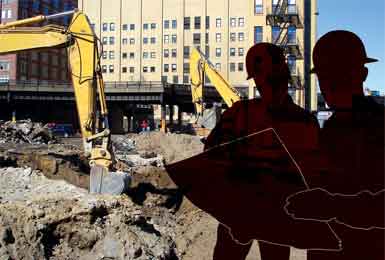Getting Brownfields Off Your Books
Keeping ownership of environmentally impaired properties carries significant financial risk, particularly in a downturned economy. With the right strategies, you can successfully divest your company of these real estate liabilities.
Oct/Nov 09

Through decades of success and change, many corporations have amassed portfolios of excess property. These properties cause significant headaches for both the corporate financial officer and risk officer. Companies have significant apprehension about divesting these properties, primarily because of the concern that the environmental liabilities could eventually rebound back to them. The buyer might not be able to meet his or her obligations and additional due diligence may trigger more environmental response actions. As a result, many of these properties remain unaltered on corporate books for decades, continuing to drag down the corporate balance sheet. Beyond the environmental liabilities and their associated costs, the other issues with balance sheet implications include property taxes, insurance, site security/maintenance, financial reporting obligations (under SOX), government actions, and diminution in brand/property value.
Communities face similar concerns as properties remain unused in the heart of their historic industrial areas. The original companies may or may not remain solvent, but the properties remain unused as a blight upon the urban environment and as an obstacle to further growth.
The Opportunity
Many of these brownfield properties housed state-of-the-art industrial operations when they were built - including automotive assembly plants, chemical manufacturing facilities, industrial warehousing, and plants built for specific applications across many industries. These facilities were situated at key locations that maximized their exposure to raw materials, markets, logistics networks, and key utilities. Many of these properties are also located near ports, along strategic transportation/transit corridors, and in urban infill locations.
While the properties may have problems and the infrastructure dates from an earlier age, these locations can still provide these same key inputs that make businesses successful. The solution, then, is to develop a risk management and redevelopment strategy that matches the best possible and most reasonable re-use of the property.
The Solution
In order to divest/re-use a brownfield property, the company or community needs to be able to match liability to opportunity. The first step is to understand the environmental liabilities and how those liabilities will be quantified and allocated between seller and buyer. This is accomplished by developing a remediation strategy that aligns with the redevelopment plan, a multi-tiered risk management strategy through insurance, third-party risk transfer, escrows/environmental trusts, and public-sector financial incentives and liability protections.
The primary advantages of divesting surplus properties and transferring the environmental liabilities are:
• eliminate/substantially reduce operating costs (identified earlier in this article);
• reduce tax obligations;
• refocus company resources on core business;
• favorably position the company for a merger and/or acquisition;
• improve brand image.
There are many examples of where the environmental risk transfer coupled with the divestment of a property has been successfully accomplished. There are also a few examples where the desired outcome was not achieved and the previous owner had to step back in. However, with the availability of sophisticated risk management expertise and insurance/financial assurance products, corporate owners should seriously look at divesting their environmental impaired properties to reduce their operating expenses, transfer their environmental liabilities, and generate positive cash flow.
Project Announcements
Ohio Lumex Expands Solon, Ohio, Operations
12/26/2025
Calgon Carbon Corporation Expands Pittsburgh, Pennsylvania, Operations
12/25/2025
Cascades Expands Eau Claire, Wisconsin, Operations
12/25/2025
P.C. Campana Plans Vicksburg, Mississippi, Production Operations
12/25/2025
Midwest Equipment Manufacturing Expands Maysville, Kentucky, Operations
12/25/2025
Stord Expands Hebron, Kentucky, Warehouse Operations
12/25/2025
Most Read
-
The Workforce Bottleneck in America’s Manufacturing Revival
Q4 2025
-
Rethinking Local Governments Through Consolidation and Choice
Q3 2025
-
Lead with Facts, Land the Deal
Q3 2025
-
Investors Seek Shelter in Food-Focused Real Estate
Q3 2025
-
Tariff Shockwaves Hit the Industrial Sector
Q4 2025
-
America’s Aerospace Reboot
Q3 2025
-
The Permit Puzzle and the Path to Groundbreaking
Q3 2025

